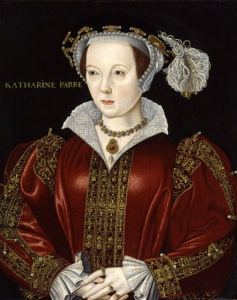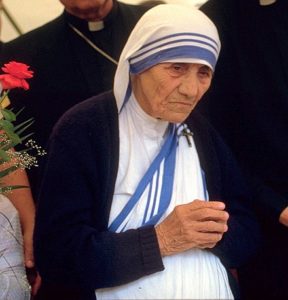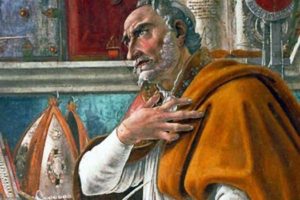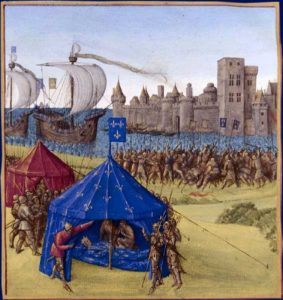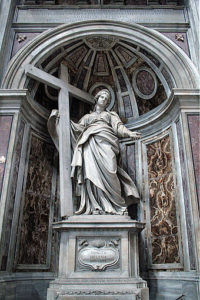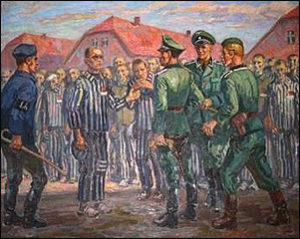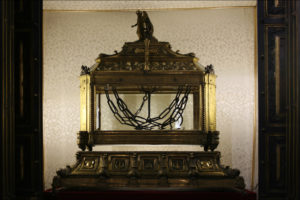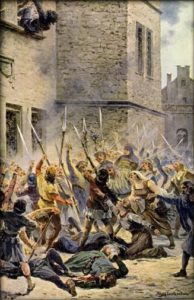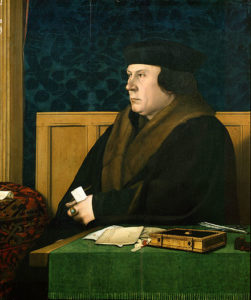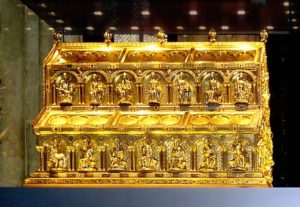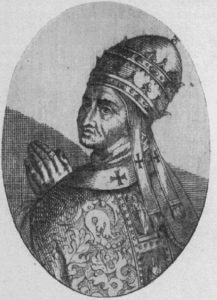1548
Death of Catherine Parr, last of the wives of Henry VIII. Catherine, already twice a widow, married Henry in 1543. Her Protestant inclinations clashed with the erratic Henry’s caesaropapalism and placed her in danger from Catholic forces at the English court. She was not able to openly show her religious sympathies but she was an effective regent when Henry went to war in France and reconciled him to the two daughters, Mary and Elizabeth,whom he had legally bastardized. Within months of the king’s death in 1547 she secretly married Thomas Seymour, brother of the Lord Protector. For a time she provided a Protestant upbringing for Princess Elizabeth and her cousin Lady Jane Grey. Her death was likely a result of complications following the birth of her only child, Mary. Her books Psalms or Prayers (1544), Prayers and Meditations (1546) and The Lamentations of a Sinner (1548) show her deep spirituality.
Saint Teresa of Calcutta
Mother Teresa (1910-97), as she was known to billions, was born in the Macedonian area of the Turkish Empire as Anjezë Gonxhe Bojaxhiu, the daughter of ethnic Albanians. As a teenager she joined the Sisters of Loreto, an order of nuns who carried out missionary work in India. After going to Ireland to learn English, the language in which the Sisters taught in their schools in India, she travelled to the subcontinent where she finalized her vows and adopted the name of Teresa, after St Theresa of Lisieux. She taught at a convent school in Calcutta for twenty years before receiving a divine call to work more directly amongst the poor.
In 1950 she founded a new order, the Missionaries of Charity, which opened a hospice for the dying, a leprosarium, a school, and an orphanage. As more Sisters joined the operations grew to include more facilities serving orphans, AIDS victims, refugees, alcoholics and the elderly. The Order expanded to other cities in India and then around the world, serving the poor in the distinctive blue-bordered habits designed to resemble saris. At the time of her death in 1997 her organization ran 610 missions in 123 countries.
Mother Teresa received the Noble Peace Prize and many other humanitarian awards but she also came in for more than her share of criticism. Her uncompromising opposition to abortion caused irritation on the Left; her Catholicism irritated the Hindu Right; atheist Christopher Hitchens accused her of hypocrisy and of taking donations from dictators and criminals. In 2016 the Catholic Church declared her sainthood.
